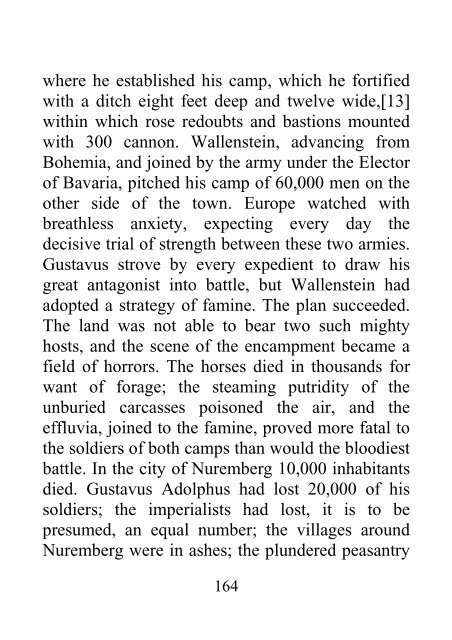The Thirty Years' War - James Aitken Wylie
- No tags were found...
You also want an ePaper? Increase the reach of your titles
YUMPU automatically turns print PDFs into web optimized ePapers that Google loves.
where he established his camp, which he fortified<br />
with a ditch eight feet deep and twelve wide,[13]<br />
within which rose redoubts and bastions mounted<br />
with 300 cannon. Wallenstein, advancing from<br />
Bohemia, and joined by the army under the Elector<br />
of Bavaria, pitched his camp of 60,000 men on the<br />
other side of the town. Europe watched with<br />
breathless anxiety, expecting every day the<br />
decisive trial of strength between these two armies.<br />
Gustavus strove by every expedient to draw his<br />
great antagonist into battle, but Wallenstein had<br />
adopted a strategy of famine. <strong>The</strong> plan succeeded.<br />
<strong>The</strong> land was not able to bear two such mighty<br />
hosts, and the scene of the encampment became a<br />
field of horrors. <strong>The</strong> horses died in thousands for<br />
want of forage; the steaming putridity of the<br />
unburied carcasses poisoned the air, and the<br />
effluvia, joined to the famine, proved more fatal to<br />
the soldiers of both camps than would the bloodiest<br />
battle. In the city of Nuremberg 10,000 inhabitants<br />
died. Gustavus Adolphus had lost 20,000 of his<br />
soldiers; the imperialists had lost, it is to be<br />
presumed, an equal number; the villages around<br />
Nuremberg were in ashes; the plundered peasantry<br />
164

















